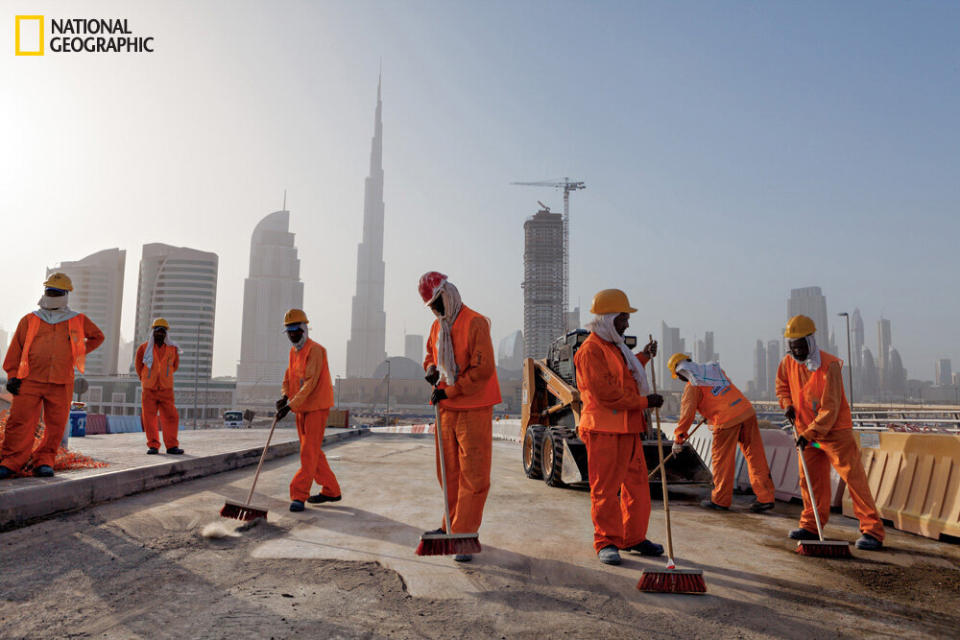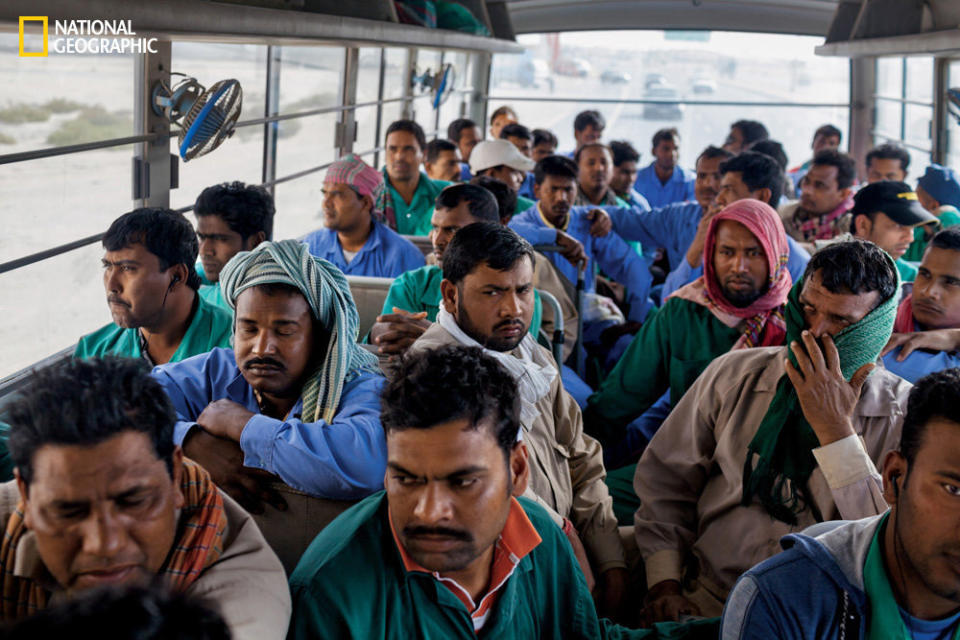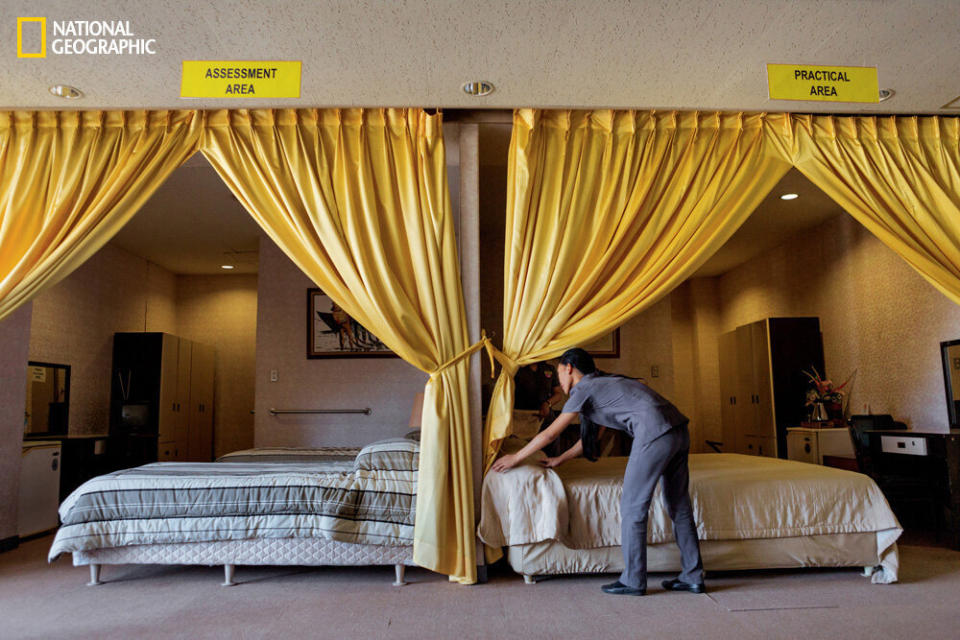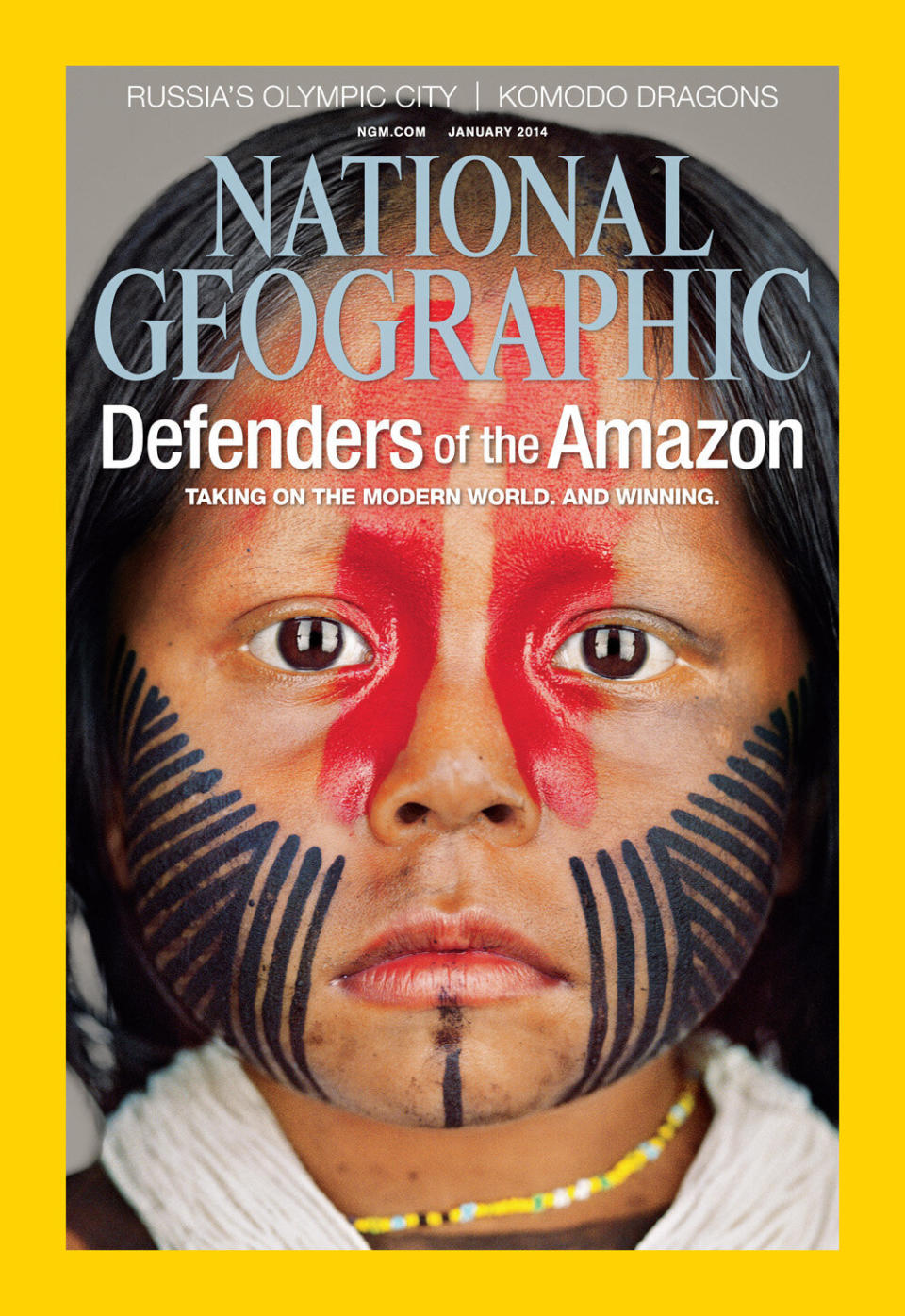PHOTOS: Behind The Scenes Of Migrant Work
For those lucky enough to live with or in proximity to their loved ones, it may be hard to remember that many in the world are not afforded the same luxury. Separated by poor economies, war, natural disasters and more, countless families turn to the Internet to maintain communication, which can range from spotty to unreliable at best.
Migrant workers make up a large group of those separated from spouses, children and communities and there is nowhere else in the world where they are as prominently visible as in Dubai.
Reporter Cynthia Gorney and photographer Jonas Bendiksen report for the January issue of National Geographic magazine on the lives and longings of Dubai's foreign workers.
Love HuffPost? Become a founding member of HuffPost Plus today.
Migration for better opportunity is as old as human history, but today it’s likely that more people are living outside their countries of birth than ever before. At every hour of every day masses of people and money are in motion, a global flux as complex and shifting as weather, with nations of fewer resources off-loading their ambitious working poor and relying on the money that comes back in their place. “Remittances” is what economists call these person-to-family transfers, whisked home by electronic banking services or hand-delivered by couriers. Tiny in individual increments, aggregate remittances now constitute massive flows of capital into the world’s developing countries. Of the many places from which this money is sent—the richest countries, where employers are willing to put needy foreigners to work—the United States tops the list.
No other city on Earth, though, packs 21st-century international workers into one showy space quite like Dubai. Arrive in the standard manner, disembarking into the sprawling international airport, and you will pass a hundred remittance workers like Teresa and Luis before you reach the curbside cabstand. The young woman pouring Starbucks espressos is from the Philippines, or maybe Nigeria. The restroom cleaner is from Nepal, or maybe Sudan. The cabdriver, gunning it up the freeway toward downtown Dubai, is from northern Pakistan or Sri Lanka or the southern Indian state of Kerala.
These photos by Jonas Bendiksen from the January issue of National Geographic magazine depict the real life of migrant workers far from home and often separated from their loved ones. Take a look at the National Geographic website or the January issue of National Geographic Magazine for the full story and more photos.






This article originally appeared on HuffPost.

